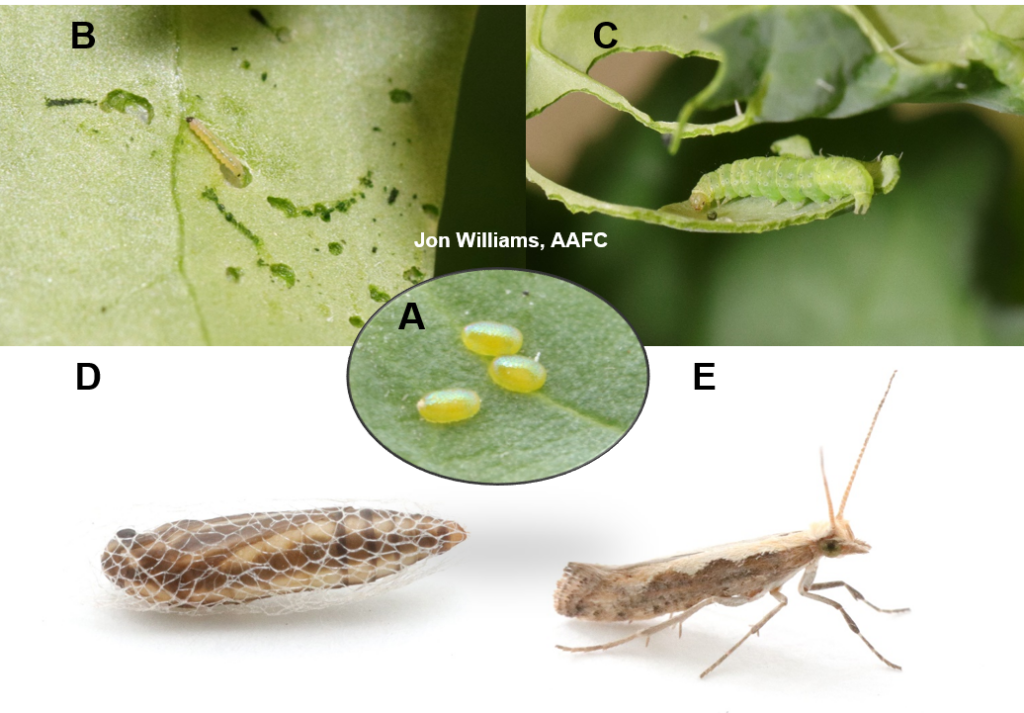Diamondback moth larvae have voracious appetites for canola, mustard, flix weed, and vegetables including broccoli, brussels sprouts, cauliflower, and kale. They are specialists of plants in the family Brassicaceae (formerly Cruciferae).
When diamondback moth larvae first hatch, they are very small and tunnel inside the leaves to eat, resulting in damage that looks like shot-holes and leaf mines.

Third and fourth instar larvae are larger and can consume entire leaves, leaving just the leaf veins. Larvae will also eat the buds, flowers and developing pods. Later in the growing season, as canola matures, diamondback moth larvae can strip the pods of any remaining green tissues.

In addition to feeding damage, frass (or fecal material) excreted by diamondback moth larvae can affect the marketability and the quality of crucifer vegetables like broccoli, cauliflower, cabbage and brussels sprouts by contaminating or staining the developing vegetable heads.
Remember that the diamondback moth can have multiple generations per year and that each generation takes about 18-20 days (but can be shorter or longer depending on temperature). With each generation, there is potential for the population density to grow and exceed economic thresholds. Scout for diamondback moth by examining plants for larvae and estimate the number of larvae per m2 to determine if the population is nearing or has exceeded the economic threshold.
In canola, the economic threshold for diamondback moth larvae is 100-150 larvae/m2 when canola plants are immature and flowering. The threshold is 200-300 larvae/m2 when canola plants are mature.
Biological and monitoring information for DBM (including tips for scouting and economic thresholds) is posted by Manitoba Agriculture, Saskatchewan Agriculture, and the Prairie Pest Monitoring Network.
Also, refer to the diamondback moth pages within the “Field Crop and Forage Pests and their Natural Enemies in Western Canada: Identification and management field guide” (2018) accessible as a free downloadable PDF in either English or French on our new Field Guides page.
